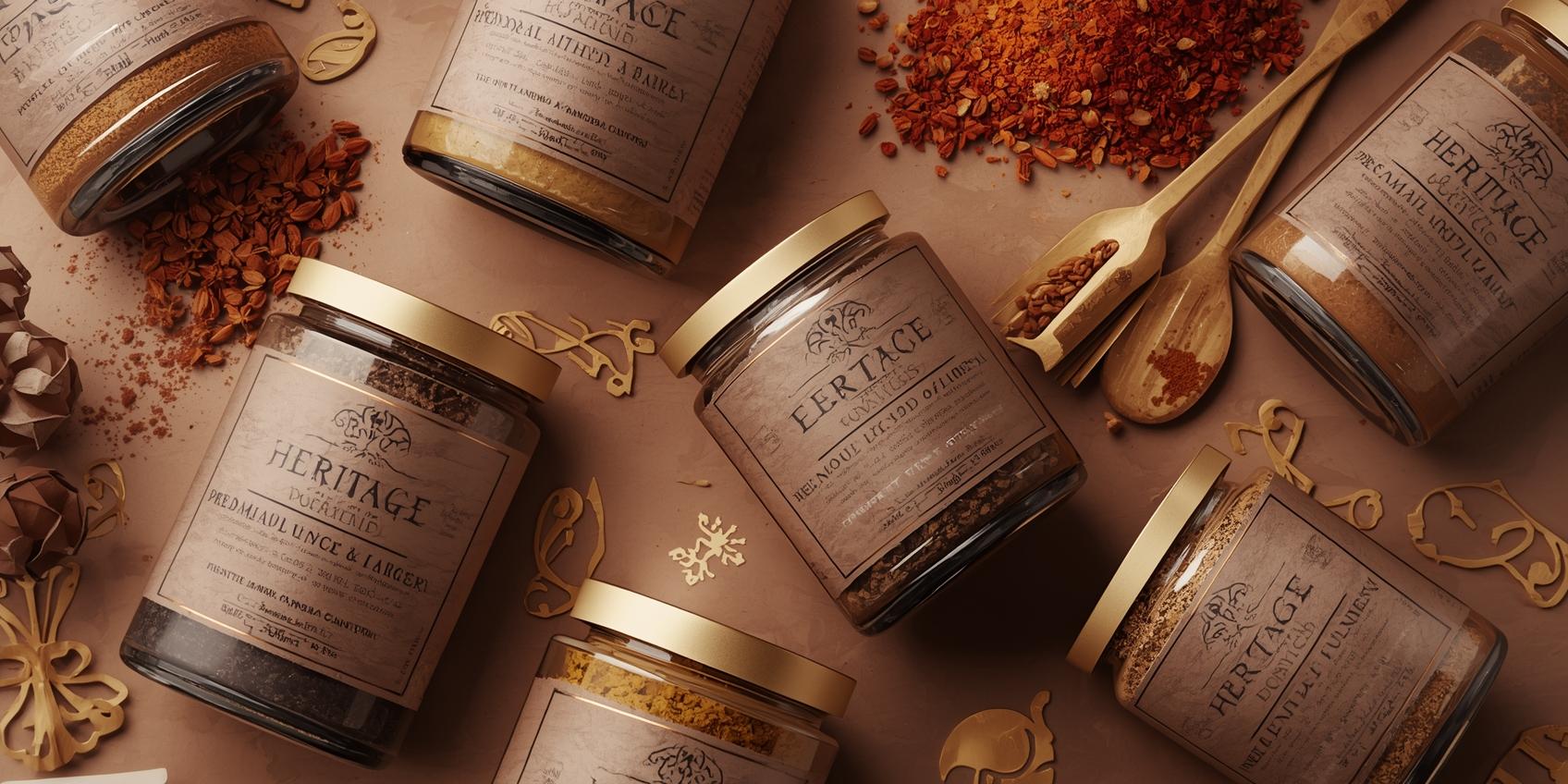Premium Brands and Heritage in India: The Story Behind What We Eat and Why It Matters

Premium Brands and Heritage in India: The Story Behind What We Eat and Why It Matters
A Cultural Moment That Speaks Volumes

It was late afternoon in a bustling street market in Mumbai. We noticed a young man hesitating in front of a jar of ghee. His hand hovered, almost involuntarily, over a small, unassuming label that reminded him of his childhood kitchens—the aroma, the texture, the memories of festive meals cooked by his grandmother. Yet, alongside it sat a newly launched premium ghee brand, its glass jar shining under the market’s harsh fluorescent lights, promising purity, refinement, and a global taste experience.
He paused. He was conflicted. That hesitation captured the core of India’s food landscape: a persistent tension between time-honoured heritage and rising aspirations. Modern Indian consumers regularly navigate this intersection, shaping national attitudes about taste, trust, and tradition.
Food in India is more than sustenance; it is memory, identity, belonging, and emotion. Today, premium brands and heritage collections intersect in this emotional space, redefining our sense of self at every meal. This interplay forms the heart of how we eat and why it matters.
The Emotional Duality of Modern Indian Consumers
India’s consumers have evolved in a dualistic way. On one hand, there is a deep-seated reverence for tradition—grandmother’s recipes, family rituals, local markets, and flavours that speak of home. On the other hand, there is a hunger for modernity, aspiration, and international standards. Young urban professionals crave brands that look refined, feel intentional, and represent a lifestyle they aspire to, yet they are deeply rooted in cultural memory.
Premium brands succeed not merely because of superior taste or packaging. They succeed because they tap into emotional desire, social identity, and cultural resonance. Heritage brands, on the other hand, sustain themselves through trust, authenticity, and the reassurance of familiarity. The most successful brands are those that balance the two, offering refinement without erasing memory.
In India, purchasing food is rarely a purely rational act. It is layered with emotion, nostalgia, and aspiration. When a consumer chooses a brand, they are choosing a narrative—one that connects personal identity with cultural belonging.
How Heritage Became Premium
Historically, heritage brands in India existed quietly, serving local communities and passing trust through generations. Brands like Amul, Bikanervala, Haldiram’s, Everest Spices, and Heritage Foods built their reputations on consistency, authenticity, and cultural relevance. They were not marketed as “premium”; they were marketed as reliable, rooted, and familiar.
The modern Indian consumer changed the game. With rising incomes, increased global exposure, and access to information through digital platforms, people began to evaluate quality differently. Heritage brands, to remain relevant, had to evolve.
Premiumization in heritage brands often involves thoughtful curation rather than reinvention: introducing artisanal variants, elevating packaging, highlighting farm-to-table sourcing, or modernising recipes while maintaining the essence. The result is a premium experience grounded in heritage, one that resonates emotionally and socially.
Psychology Behind Indian Food Choices
To understand why Indians gravitate towards premium heritage brands, we need to consider the psychology at play:
-
Memory and Taste: Flavours experienced in childhood carry enormous weight. A spice blend or a sweet from a traditional brand triggers neural associations with family, celebration, and comfort.
-
Trust and Safety: Heritage implies continuity. It assures us that quality is not accidental. In a market saturated with choices, this reassurance is invaluable.
-
Aspirational Identity: Premium branding allows us to align purchases with personal ambition, social visibility, and lifestyle identity.
-
Cultural Validation: Choosing a heritage or premium brand often feels like participating in a shared cultural or social narrative.
Brands that succeed in India, therefore, do more than satisfy hunger—they anchor identity, emotion, and aspiration simultaneously.
Narratives Over Products: Why Storytelling Matters
A premium food brand’s power often lies in narrative, not ingredients alone. Consumers respond to stories about origin, craft, and cultural significance. For instance:
-
A tea brand emphasising leaves sourced from century-old estates elevates perception beyond taste.
-
A spice brand highlighting stone-ground tradition signals respect for culture and care.
-
A sweet maker showcasing regional recipes curated across generations blends nostalgia with refinement.
The story informs perception. It explains why consumers are willing to pay slightly more for products that resonate with memory, craftsmanship, and authenticity.
Digital media amplifies this effect. Social media campaigns, founder stories, and behind-the-scenes videos allow brands to communicate emotion and heritage directly to the consumer, building trust before purchase even occurs.
Regional Identity as Premium Value

India is a mosaic of flavours and traditions. Each region contributes unique ingredients, methods, and culinary philosophies. Premium brands increasingly leverage this regional identity to differentiate themselves:
-
Andhra podis presented as curated gourmet condiments
-
Kashmiri saffron is positioned as a global luxury ingredient.
-
Rajasthani millet laddoos are marketed as nutritious, artisanal snacks.
-
Kerala cold-pressed coconut oils are sold with emphasis on purity and ancestral knowledge.
By connecting regional authenticity with premium presentation, brands create products that feel both elite and culturally grounded, appealing to multiple emotional layers of the consumer.
Generational Shifts and Youth Influence
Interestingly, younger Indians—millennials and Gen Z—are the strongest drivers of the premium heritage trend. While they are digitally savvy, globally exposed, and aspirational, they also seek connection to roots. They crave products that are Instagram-worthy, ethically sourced, and aesthetically pleasing—but still resonate with familial or cultural memory.
This duality has led brands to innovate thoughtfully. Limited-edition collections, curated heritage recipes, and contemporary reinterpretations of traditional foods cater to these sensibilities, merging the old and new seamlessly.
The Silent Role of Packaging
Packaging is often underestimated, but it is critical in shaping perception. Minimalist glass jars, matte finishes, heritage-inspired typography, and informative labels convey refinement. Simultaneously, motifs reflecting traditional regional patterns, vintage illustrations, or nods to artisanal methods—signal authenticity.
In India, this dual approach works powerfully because the consumer reads emotion from design before even tasting the product. Premium packaging communicates care, respect, and attention to detail, reinforcing the brand narrative.
Global Recognition of Indian Heritage
Today, heritage and premium brands are not confined to Indian markets. International demand for products like Amul dairy, Haldiram’s snacks, or single-origin Indian spices demonstrates that India’s traditional culinary knowledge carries global appeal.
What was once ordinary in local households has become exotic and luxurious abroad. This global recognition reinforces the premium perception at home. Indians, seeing their heritage validated internationally, feel pride and renewed connection to these brands.
The Future of Premium Heritage in India
Looking ahead, the interplay between premium and heritage is poised to define the next phase of Indian food branding. Consumers will continue to seek authenticity, while also valuing innovation, design, and lifestyle alignment. Brands that blend these elements—honouring cultural memory while offering refined experiences—will dominate.
We anticipate:
-
More regionally curated premium offerings
-
Greater transparency and ethical sourcing
-
Digital storytelling is shaping trust and aspiration.
-
Integration of nutrition, wellness, and functionality
-
Experiential retail and immersive brand journeys
In essence, the future belongs to brands that respect the past, embrace the present, and anticipate the aspirations of tomorrow.
Conclusion
Premium and heritage are no longer separate worlds in India—they are intertwined, reflecting our evolving identity. Food is no longer just nourishment; it is culture, memory, identity, and aspiration. The brands that succeed are the ones that honour these layers, giving consumers both emotional connection and aspirational delight.
When we select a jar of ghee, a spice blend, or a handcrafted sweet, we are doing more than shopping—we are participating in a narrative that bridges generations, celebrates culture, and redefines what premium means in an Indian context.
In India, taste, trust, and tradition have become inseparable, and the future belongs to the brands that understand this beautifully nuanced intersection.
FAQs
Q: Why are heritage food brands gaining popularity among younger Indians?
A: Younger consumers crave authenticity and connection to roots while also valuing quality, design, and lifestyle alignment. Heritage brands satisfy both.
Q: Does premium always mean imported or expensive?
A: No. Premium often represents quality, care, ethical sourcing, and storytelling, not just price. Many Indian heritage brands have successfully premiumized locally.
Q: How do premium heritage brands maintain authenticity?
A: By preserving traditional recipes, artisanal processes, regional sourcing, and transparent communication, even as they scale.
Q: Can a modern Indian consumer trust both premium and heritage simultaneously?
A: Yes. Most consumers see heritage as emotional assurance and premium as aspirational refinement—they seek products that offer both.
Q: How does digital influence food brand perception in India?
A: Digital platforms amplify storytelling, ingredient transparency, founder narratives, and social proof, building trust and emotional resonance before purchase.





